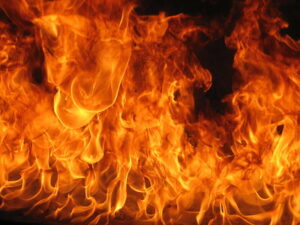“But the heavens and the earth which are now preserved by the same word, are reserved for fire until the day of judgment and perdition of ungodly men” (2 Peter 3:7).
If we were to subtitle our look at this portion of Scripture, we might do so with the following caption: “That was then, this is now.”
The preceding verse introduced the “then” portion of our fictional subtitle when we were told, “…the world that then existed was deluged with water and perished” (2 Peter 3:6 ESV). The “now” portion references the fact that “…heaven and earth are now held in reserve for fire, kept for the Judgment Day and destruction of ungodly people” (CEB).
Although this cataclysmic end-time event tends to command the most attention, there is another aspect of this passage that also reveals a great display of power: “…the heavens and the earth that now exist are being preserved by the same command of God” (GNT). So just as God spoke creation into existence through His word, this verse tells us that He continues to sustain His creation in a similar manner.
 Nevertheless, that sustaining effort will continue only as long as God sees fit. When God ceases to maintain the current form of the heavens and earth, He will use fire as His chosen element of dissolution. This imagery should be familiar to readers of the Old and New Testaments alike. For example, the book of the Old Testament prophet Nahum alludes to the fiery presence of God…
Nevertheless, that sustaining effort will continue only as long as God sees fit. When God ceases to maintain the current form of the heavens and earth, He will use fire as His chosen element of dissolution. This imagery should be familiar to readers of the Old and New Testaments alike. For example, the book of the Old Testament prophet Nahum alludes to the fiery presence of God…
“In his presence the mountains quake, and the hills melt away; the earth trembles, and its people are destroyed. Who can stand before his fierce anger? Who can survive his burning fury? His rage blazes forth like fire, and the mountains crumble to dust in his presence” (Nahum 1:5-6 NLT).
A similar image appears in the New Testament epistle of 2 Thessalonians…
“And so I would say to you who are suffering, God will give you rest along with us when the Lord Jesus appears suddenly from heaven in flaming fire with his mighty angels, bringing judgment on those who do not wish to know God and who refuse to accept his plan to save them through our Lord Jesus Christ” (2 Thessalonians 1:7-8 TLB).
Finally, this catastrophic act of destruction is more than just an event that is destined to occur in the remote future. Instead, the Apostle Peter is building towards a present-day application that he will bring to our attention shortly in verse eleven.
Image Credit: “flaming gold” by paloetic is licensed under CC BY 2.0.
